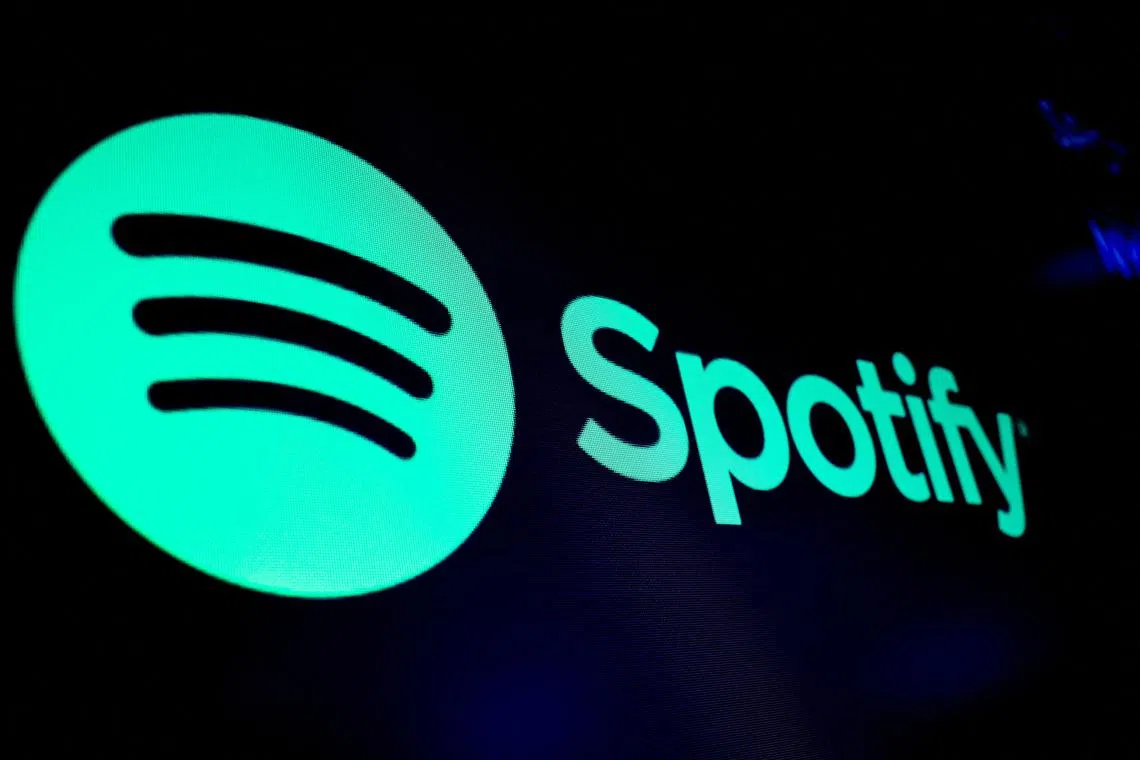Spotify has paid over US$100m to podcasters to take on competitors
Sign up now: Get ST's newsletters delivered to your inbox

The payout is the result of a programme introduced in 2025 that opened new revenue streams to eligible hosts.
PHOTO: REUTERS
Jessica Testa
Follow topic:
Spotify has paid more than US$100 million (S$131 million) to podcast publishers and creators since January, the company told The New York Times’ DealBook.
The payout is the result of a programme introduced in 2025 that opened new revenue streams to eligible hosts. But it is also an attempt to draw more creators – and their audiences – to Spotify, as the rise of video podcasting has driven many of them to YouTube.
Video has come to dominate podcasting. More than half of Americans older than 12 have watched a video podcast, but primarily on YouTube, according to an Edison Research report from January.
The service claims to reach one billion podcast consumers every month, making it the dominant platform for podcasts – a media king and kingmaker – and leaving one-time audio-only platforms like Spotify and Apple Podcasts in the dust. Spotify introduced video podcasts in 2019.
Compared with YouTube, Spotify has become a podcast underdog, with about 170 million monthly podcast listeners among its total audience of 675 million. One indication of how far Spotify has to go to catch up with the top player: YouTube paid out more than US$70 billion to creators and media companies from 2021 to 2024.
The company reports earnings on April 29 and is expected to make about €540 million (S$807 million) in pre-tax income on €4.2 billion in sales, according to S&P Capital IQ.
But Spotify, which is listed on the New York Stock Exchange, remains a major player in the industry thanks in part to its talent roster – it distributes and sells advertising for the biggest podcast in the world, The Joe Rogan Experience, which is also available on YouTube.
The Stockholm-based Spotify achieved its first full year of profitability in 2024.
The new partner programme aims to chip away at YouTube’s dominance.
Spotify previously paid creators only by sharing advertising revenue with them, much like YouTube. Now it also gives them incentives to upload videos, with eligible creators earning additional money based on how much premium subscribers engage with their videos.
The company is trying to attract more viewers. At the same time that Spotify announced the partnership programme in November, it added that paid subscribers in certain markets would not have to watch dynamic ads in video podcasts. Video consumption has increased more than 40 per cent since January, according to Spotify.
The question now is whether Spotify can persuade creators to shift priorities.
David Coles, host of the horror fiction podcast, Just Creepy: Scary Stories, said he was re-evaluating his “home platform” after his Spotify revenue recently surpassed his YouTube revenue.
Last quarter, Coles said, he received about US$45,500 from Spotify. After joining the company’s new partner programme, his quarterly Spotify income rose to about US$81,600.
This increase can be even more dramatic for larger shows and podcast companies, like YMH Studios, a comedy network with 2.1 million YouTube subscribers that produces popular podcasts including 2 Bears, 1 Cave.
While declining to share exact figures, YMH Studios said its quarterly Spotify revenue more than tripled after joining the partner programme.
Although creators emphasised that these were still early days, Mr Alan Abdine, head of advertising revenue at YMH Studios, called the new payment programme a “game changer” and “very happy surprise”. NYTIMES

